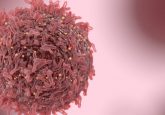One dose, one treatment, one day – interview with Richard Simcock

In this interview, Consultant Clinical Oncologist Richard Simcock discusses single-dose intraoperative radiotherapy (SD-IORT) for early stage breast cancer – a procedure that allows a patient to receive surgery and all of their radiation treatment at the same time. Read on to discover more about SD-IORT, how it compares with daily external beam radiotherapy (EBRT) and details of a recent SD-IORT study that reported positive patient experience outcomes.
OC: Could you please introduce yourself and tell us a little about your career to date?
RS: I am a Consultant Clinical Oncologist at the Sussex Cancer Centre based in Brighton (UK). I have been there since 2004. I treat breast cancer in a multidisciplinary setting based at the Park Centre for Breast Care. Before joining the team at Brighton, I had trained in London (UK) and Sydney (Australia). I am the co-author of the ABC of Cancer Care [1] and am a member of the Expert Reference Group for the treatment of older people with cancer. I am also helping to coordinate a free medical education resource for radiation oncology professionals – Radiation Nation [2].
OC: What are the current standard-of care treatment options for patients with early stage breast cancer?
RS: Surgery is a curative procedure in the majority of patients and is offered whenever possible. With the safety of modern anaesthetic and surgical techniques it is most often the case that surgery can take place. Surgery to conserve the breast (wide local excision) is preferred wherever possible, but mastectomy may be necessary according to tumor stage and/or breast size. Modern oncoplastic techniques significantly reduce any cosmetic detriment resulting from surgery.
After breast conserving surgery, postoperative EBRT to the whole breast is considered a standard therapy in the majority of patients to reduce the risk of local recurrence. Recent large UK trials (START and FAST) have demonstrated that this radiotherapy may be delivered in less fractions than traditional hypofractionation, and the majority of radiation courses in the UK are now given in 15 sessions.
Very recent data from the IMPORT LOW study also suggest that in low risk patients the radiotherapy can safely be confined to the area of the breast the tumor was removed from when using external beam treatment over 15 fractions. Restricting treatment to part of the breast is referred to as partial breast irradiation (PBI). There are some patients for whom the risk of a recurrence is so low that the protection from hormone therapy alone is enough that radiotherapy can safely be avoided altogether (this was shown in the UK PRIME 2 study). Risk of recurrence can be estimated using calculators like ‘IBTR!’ [3].
OC: What are the downsides associated with standard daily external beam radiotherapy for patients with early stage breast cancer?
RS: EBRT is time consuming for the patient. A conventionally delivered course of therapy will require 16 visits to the treating center; one for simulation/measurement and 15 separate visits for ‘fractions’ of treatment. Treatment centers are most often regional and therefore it is not unusual for patients to have to travel significant distances for their treatments. This daily requirement for treatment is disruptive to home and work life, and may present very real challenges to the older person. The need to attend for treatment is very off putting to many patients and duration is important; a recent study demonstrated that 47% of mastectomy patients in Australia would have chosen breast-conserving surgery if duration of therapy was 3 weeks rather than 5 weeks [4].
Standard EBRT treats the whole breast and therefore leads to side effects including fibrosis and cosmetic change affecting the whole breast. Treatment to the left breast increases the risk of cardiac damage and late cardiac side effects, which now necessitates a more complex approach to treatment planning to reduce cardiac doses.
For the treatment centers, breast radiotherapy is a huge share of resource use. At my own center, approximately 30–40% of treatment fractions delivered are for breast cancer – this is at a time when radiotherapy machines are particularly over stretched. Replacement programs for new radiotherapy machines in the UK are falling behind: in a 2014 report, 38 of the 269 linear accelerators in the UK were over 10 years old. Initiatives to reduce the numbers of EBRT fractions delivered will help increase radiotherapy capacity for all cancer patients.
OC: What is single-dose intraoperative radiotherapy and how does it differ from the above?
RS: SD-IORT uses technology that has permitted miniaturization of radiotherapy delivery. At the time of surgery, immediately after removal of the tumor, the cavity that is created is filled with a radiotherapy applicator. This applicator is then able to safely deliver a single large dose of radiotherapy to the tissue immediately surrounding the breast tumor (which is the area at highest risk for recurrence). Giving radiation in this way is referred to as brachytherapy (close to the tumor). The rest of the breast tissue is not irradiated, and neither are the heart or lungs affected.
The applicator is then removed and the surgeon completes the operation in the normal way. The procedure is done at the time of surgery and adds between 30–40 minutes to the operation time. The patient can have their surgery and all of their radiation treatment at the same time.
The SD-IORT procedure may be suitable for women with early stage breast cancers that fit within certain risk parameters. If the tumor (on postoperative analysis) proves to be higher risk than expected then further radiotherapy can still be delivered in the conventional way and the SD-IORT is considered a ‘boost’. Suitability for IORT has been defined by the American Society of Therapeutic Radiation Oncology (ASTRO).
OC: Could you summarize what was carried out in the recent patient experience study of SD-IORT in early stage breast cancer patients that you were involved with?
RS: Having started to introduce SD-IORT to carefully selected patients we wanted to test whether the advantages of the technique as we perceived them (convenience, rapid recovery, good cosmesis) were being experienced by our patients. We also wanted to be certain that in presenting options of therapy to patients (EBRT vs SD-IORT) we were properly supporting patients in the decision-making process. Our model was for patients to see a surgeon, an oncologist and a breast care nurse separately before deciding on their procedure.
We asked 19 patients to complete a survey 6 months after their treatment.
OC: What were the main findings of this study?
RS: We were pleased to see that all but one of our patients felt that they had all the time and information they needed to make a decision about treatment and all patients knew who to ask if they had questions. We had pleasing confirmation that the impact of the radiotherapy treatment was minimal with 84% of individuals back to normal activities within 4 weeks of treatment (and 26% within a week).
At 6 months all patients rated the cosmetic outcome as ‘Good’ or better and 95% rated tiredness at 56 months as ‘Good’ or better. None of these patients have had any adverse complications of the procedure. These data supported our impression that the procedure was low impact and well tolerated and that our model for supporting shared decision-making was well received by patients. They are a low-risk group so will continue to be followed for a long time (as part of a European Registry Study) to record any disease recurrences.
OC: Do IORT and EBRT have similar efficacy in early breast cancer?
RS: The largest data set we currently have on IORT comes from the TARGIT-A trial. This UK-based trial has relatively short follow-up compared to other studies of PBI and has been criticized for this. In TARGIT-A the 5-year recurrence rate for patients treated with IORT at the time of surgery was low at 2·1% (1·1–4·2) versus 1·1% (0·5–2·5) with EBRT. This difference was not statistically significant (p = 0·31).
When IORT was delayed and given later (as a second procedure) the results were clearly inferior to EBRT. This suggests that IORT with surgery has results similar to EBRT, but this will need confirmation from longer follow-up.
Another IORT trial (the ELIOT trial) included a large number of high-risk patients and appeared to demonstrate that for these patients IORT was not suitable. A larger brachytherapy trial with longer follow-up (the GEC-ESTRO trial) used more fractions of brachytherapy (over 4–5 days) but showed equivalence to standard therapy.
OC: Why do you believe it is important that breast cancer patients are offered a choice of radiotherapy options?
RS: Throughout cancer care we value choice for our patients: surgeons will discuss options of mastectomy or breast-conserving surgery, medical oncologists will discuss the value of chemotherapy or not. In these conversations we listen the patient’s values in shared decision-making and, in the example of chemotherapy, are frequently content to avoid chemotherapy because of fear of toxicity in full knowledge that recurrence rates are higher without. In the case of radiotherapy there appears to be less consideration of the patient’s values and concerns. The debate over IORT vs EBRT has centered almost solely on arguments around recurrence rates without factoring those other issues that might be of importance to the patient. I have counseled many patients who have been pleased to accept a theoretically slightly higher chance of local recurrence for the benefits of the convenience of IORT. Properly informed patients are able to make these choices and it is paternalistic of us not to offer them.
OC: Although SD-IORT appears to provide an effective alternative to daily EBRT, as noted in the press release, SD-IORT is not routinely available in the UK. Do you think this will change?
RS: Sadly, Specialised Commissioning and NHS England and NICE seem content to accept the ‘needs more evidence’ approach – which whilst not unreasonable – does allow them to sit on their hands with respect to future service development. This means that current units that have already invested to a significant degree in some of the hardware to provide SD-IORT cannot use those machines. Other centers that might use SD-IORT to relieve radiotherapy capacity or to bring treatment closer to a patient’s home will not be able to do that either. It’s a source of great frustration.
OC: Any other comments?
RS: The positive results from GEC_ESTRO study and IMPORT LOW I think are moving the radiotherapy community more comprehensively to a point where they can accept that smaller volumes and shorter treatments are acceptable in the treatment of some early stage breast cancers. Acceptance of this and a more open dialogue with patients around risks and benefits might allow us to see more patients benefit from SD-IORT in the future.
References
- ABC of Cancer Care. Palmieri C, Bird E, Simcock R (Eds). Wiley (2013).
- Radiation Nation: http://www.radiationnation.com/
- Tufts Medical Center, IBTR! Version 2.0: https://www.tuftsmedicalcenter.org/ibtr/
- Rippy EE, Ainsworth R, Sathananthan D, Kollias J, Bochner M, Whitfield R. Influences on decision for mastectomy in patients eligible for breast conserving surgery. Breast 23(3), 273–278 (2014).
Author biography
Dr Richard Simcock (MBBS, MRCPI, FRCR Oncology) has been a Consultant Clinical Oncologist at the Sussex Cancer Centre since 2004. He specializes in the treatment of breast and also head and neck cancers. Previously he had worked at the Sydney Cancer Centre, Australia, and before that had completed 5 years of postgraduate specialist training in Oncology in London and the South East UK. He graduated from Guys and St. Thomas’ Hospital (London, UK) in 1993.
Working closely with the surgical and nursing team, Dr Simcock sees and treats patients diagnosed with early or advanced breast cancer. He advises on the role of radiation, chemotherapy, hormone, biological, and experimental treatments. He has treated private patients with SD-IORT at the Montefiore Hospital, Hove (UK).
He is also involved in enrolling patients in trials of new therapies as well as trials of improved radiation therapies.
As well as his clinical roles, Dr Richard Simcock was previously a Clinical Lead for Breast Services at Brighton and Sussex University Hospitals NHS Trust and Chair of the Sussex Cancer Network Breast Tumour Group (UK).
He is a Consultant Medical Adviser for Macmillan Cancer Support where he has worked on the Treatment Recovery Package and Survivorship programs. He is Medical Adviser to the charity ‘Mummy’s Star’ which supports women diagnosed with cancer in pregnancy. In 2016 he was appointed Chair to the National Expert Reference Group on Treatment of Cancer in the Elderly.
He is co-author of the textbook ‘The ABC of Cancer Care’ and with colleagues in USA and Spain co-moderates a website ‘Radiation Nation’ which provides free open-access medical education and dialogue in radiotherapy
He tweets as @BreastDocUK.




